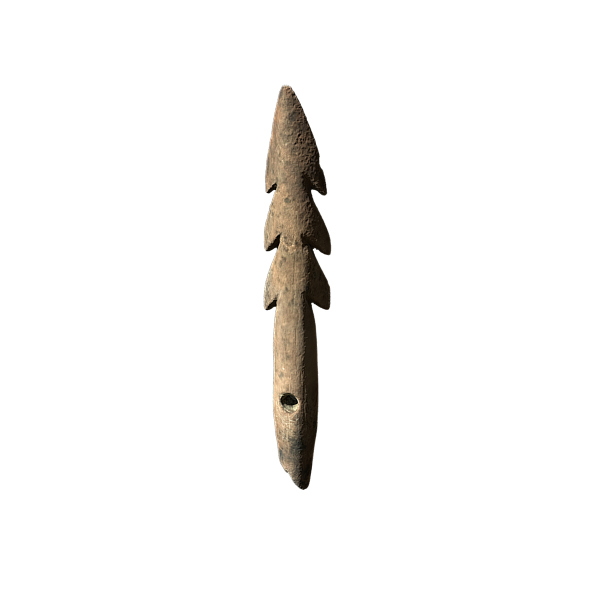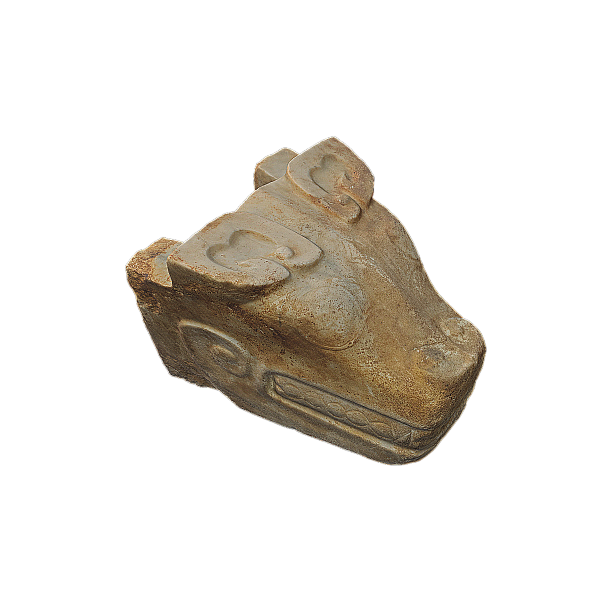Yong-bell with Coiled Chi-dragon Patterns (Part of a Bianzhong Bell Set)
| Accession No. | R020246 |
|---|---|
| Period | Eastern Chou |
| Material | Bronze |
| Findspot | Tomb No. 60 Liu-li-ko Site |
| Geographic Location | Chengguan Town, Hui County, Henan Province, China |
| Dimension | H. 63 cm; Diam. of rim 33.8 cm |
Description
This yong-bell was found at Tomb 60, Liulige, Hui County, Henan Province and is part of an 8 piece bianzhong chime-bells set. Yong-bells appeared during the early Western Zhou replacing nao-cymbals. During the Western Zhou, a yong-bells set would be formed of three bells, while during the mid-Spring and Autumn period, a sequential set would contain eight bells. Later, the number of yong-bells expanded further and became non-standardized. Each bell could make particular pitches in the music scale, moreover, each bell could produce two distinct pitches by striking the center or the side of the bell. Basic components of a niu-bell include the yong handle, kan and xuan that are surrounding the handle, wu at the top of the bell body, mei raised bosses on the body, the zhuan decorative bands that alternate with mei, the zheng at the center of the bell and gu the striking area at the bottom. The specimen has a level top with an undecorated hollow yong handle and a kan loop handle that is shaped like a curved animal. The whole piece bears 36 raised bosses and an arc-shaped base. There are several rectangular holes on the body and the striking area. Several parts of the bell body are encircled with coiled chi-dragon patterns; the artistic composition of the patterns on the striking area resembles an up-side-down animal-mask pattern with two horns, two ears, and two snouts. This artifact was cast with the piece-mold technique.


